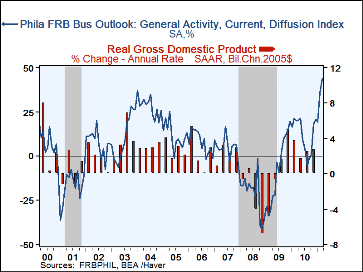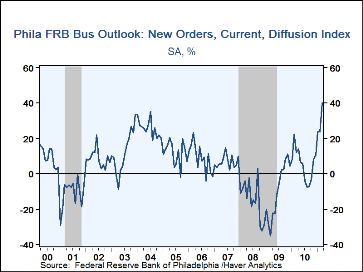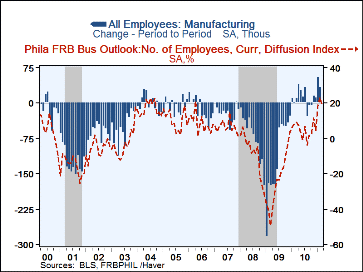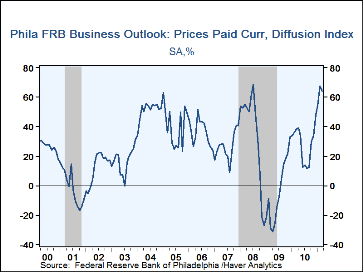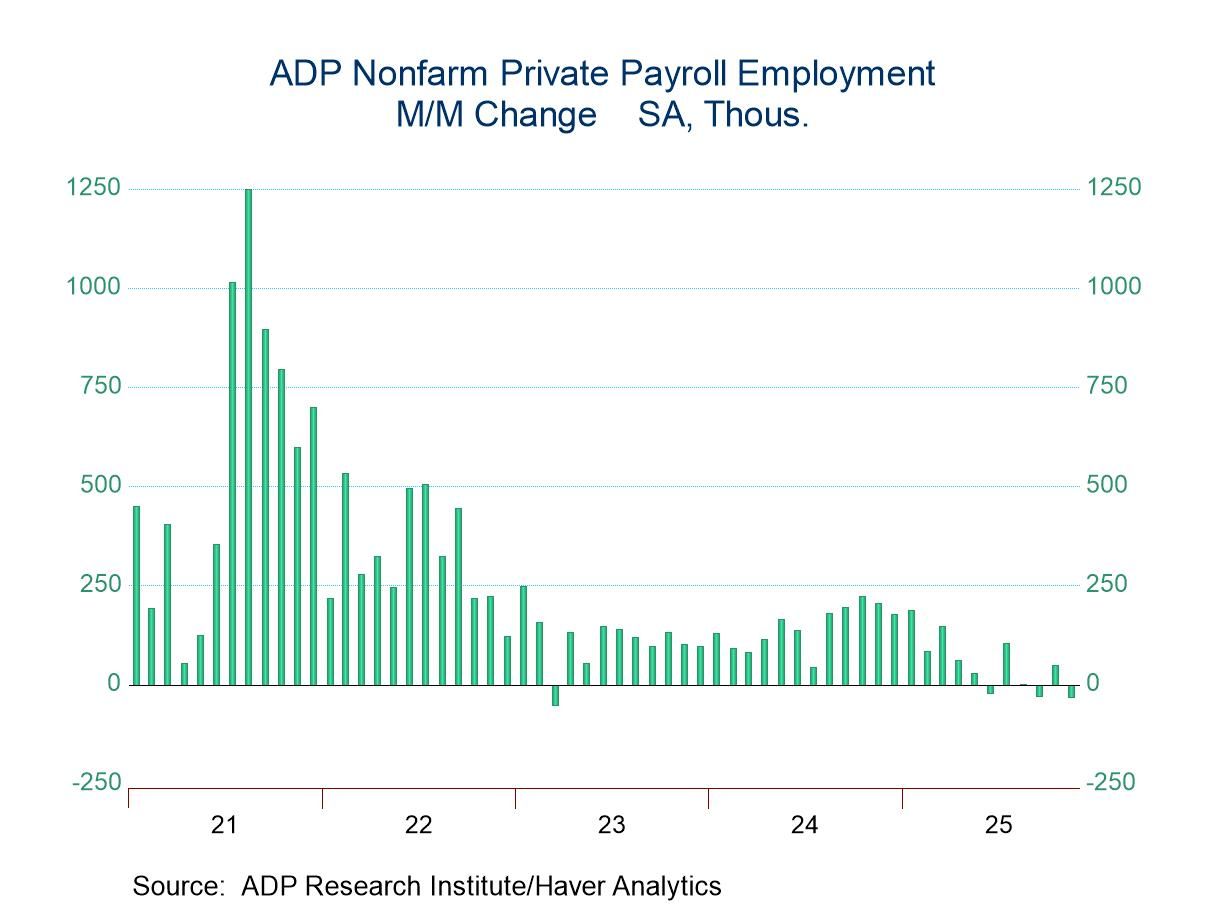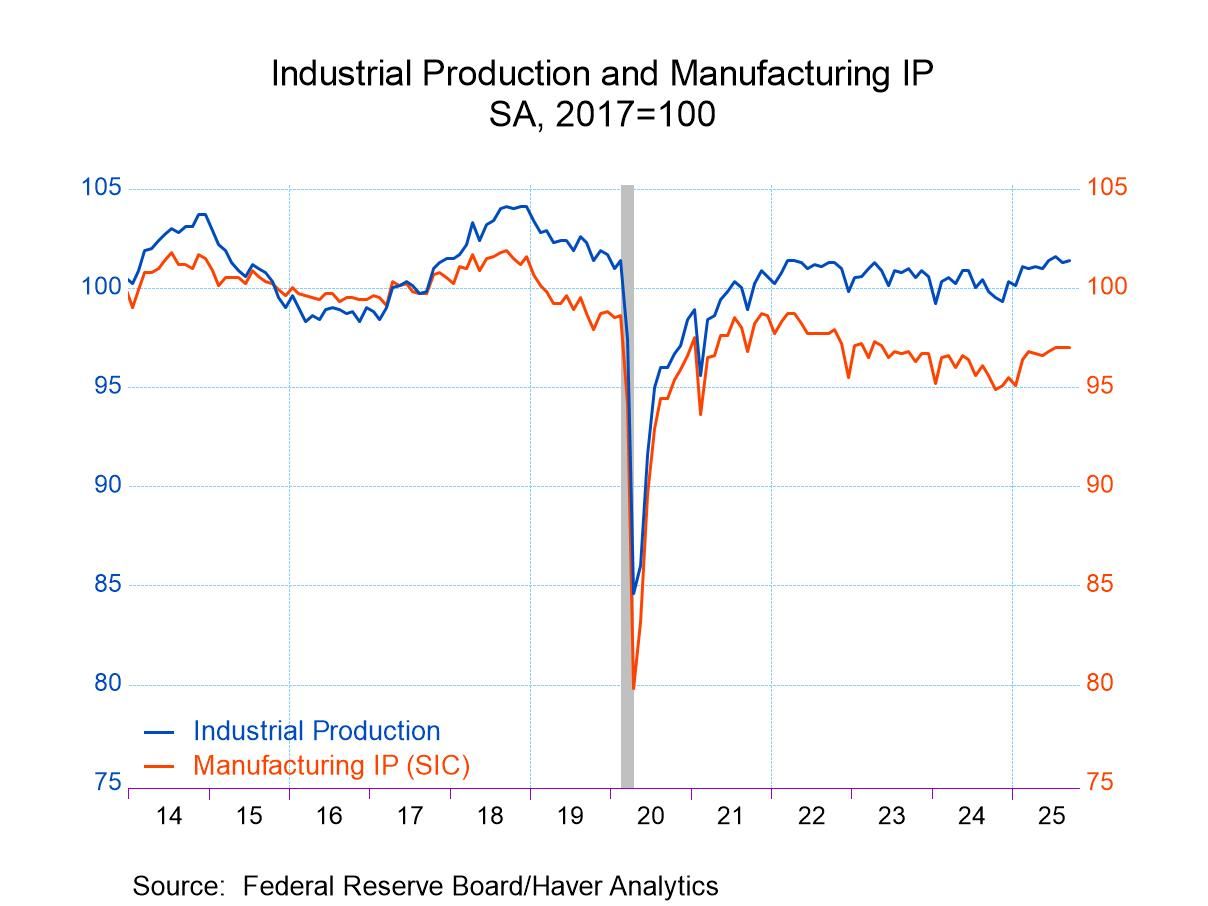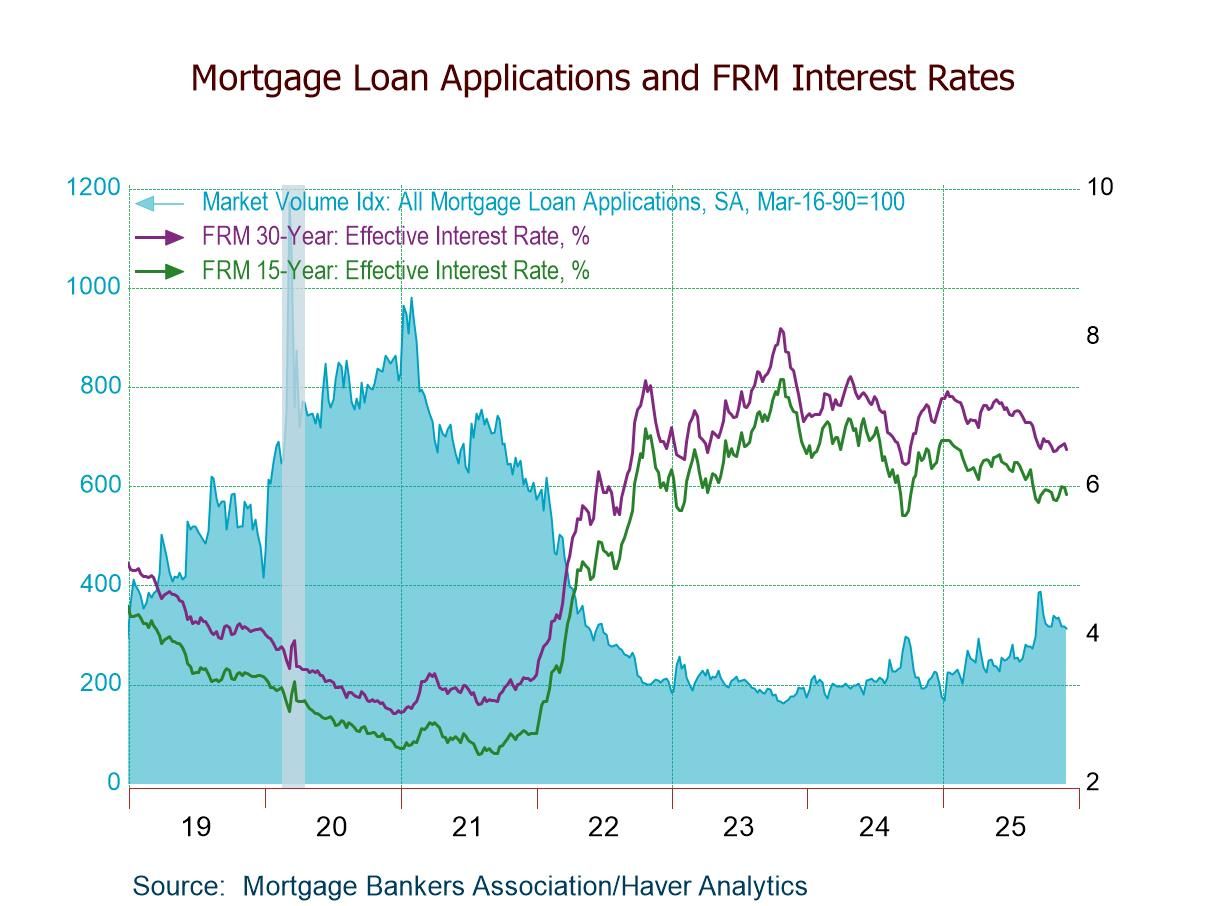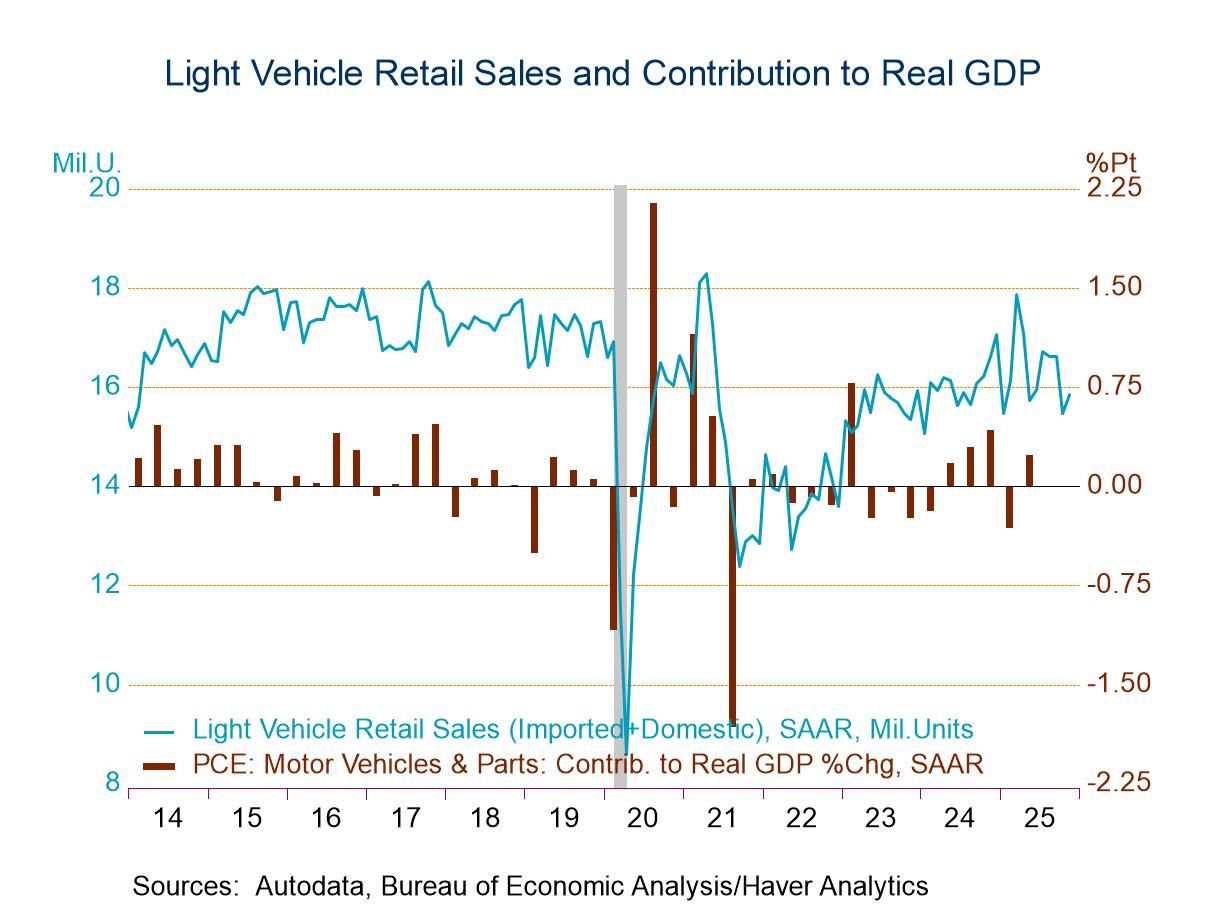 Global| Mar 17 2011
Global| Mar 17 2011Philadelphia Fed Business Activity Index Jumps
by:Tom Moeller
|in:Economy in Brief
Summary
More strength is evident in the Philadelphia Federal Reserve Bank's index of regional factory sector activity. The figure rose to 43.4 from an unrevised 35.9 in February. It was the highest level since January 1984 (no typo). It beat [...]
More strength is evident in the Philadelphia Federal Reserve Bank's index of regional factory sector activity. The figure rose to 43.4 from an unrevised 35.9 in February. It was the highest level since January 1984 (no typo). It beat Consensus expectations for 30.0. During the last ten years, there has been an 76% correlation between the level of the Philadelphia Fed Business Conditions Index and the three-month growth in factory sector industrial production. There has been a 78% correlation with q/q growth in real GDP.
Month-to-month improvement, however, was limited to a few components. The orders series nearly doubled m/m to 40.3, inventories rose to the highest since early-2006, and the employee workweek lengthened. Elsewhere, the component series were flat-to-down. The shipments series fell slightly after a 21.8 point February jump to its highest level since 2004. The employment figure also fell from its highest since April 1973. During the last ten years, there has been an 88% correlation between the index level and the monthly change in manufacturing sector payrolls.
The prices paid index fell from its highest level since July 2008. Sixty-four percent of firms paid higher prices while, again, none paid lower. During the last ten years there has been a 70% correlation between the prices paid index and the three-month growth in the intermediate goods PPI. There has been an 78% correlation with the change in core intermediate goods prices.
The separate index of expected business conditions in six months improved sharply to its highest since 1992 as expectations for new orders, employment and capital expenditures jumped. Expectations for prices slipped from its highest since 1988.
The survey panel consists of 150 manufacturing companies in Federal Reserve District III (consisting of southeastern PA, southern NJ and Delaware.) The diffusion indexes represent the percentage of respondents indicating an increase minus the percentage indicating a decrease in activity. The figures from the Philadelphia Federal Reserve can be found in Haver's SURVEYS database. The Consensus expectations figure is available in AS1REPNA.
| Philadelphia Fed (%) | Mar | Feb | Jan | Mar '10 | 2010 | 2009 | 2008 |
|---|---|---|---|---|---|---|---|
| General Activity Index | 43.4 | 35.9 | 19.3 | 20.1 | 12.1 | -7.7 | -21.5 |
| New Orders | 40.3 | 23.7 | 23.6 | 12.4 | 5.4 | -9.8 | -14.9 |
| Shipments | 34.9 | 35.2 | 13.4 | 15.6 | 8.2 | -8.1 | -9.2 |
| Unfilled Orders | 14.9 | 14.9 | 8.7 | -3.9 | -3.0 | -15.3 | -17.6 |
| Delivery Times | 8.5 | 10.0 | 2.3 | 8.1 | 0.9 | -15.3 | -10.6 |
| Inventories | 12.0 | 2.1 | 6.8 | -5.6 | -5.1 | -24.1 | -16.7 |
| Number of Employees | 18.2 | 23.6 | 17.6 | 9.3 | 4.6 | -24.0 | -8.8 |
| Inventories | 12.0 | 2.1 | 6.8 | -5.6 | -5.1 | -24.1 | -16.7 |
| Prices Paid | 63.8 | 67.2 | 54.3 | 38.2 | 28.5 | -4.0 | 36.1 |
Tom Moeller
AuthorMore in Author Profile »Prior to joining Haver Analytics in 2000, Mr. Moeller worked as the Economist at Chancellor Capital Management from 1985 to 1999. There, he developed comprehensive economic forecasts and interpreted economic data for equity and fixed income portfolio managers. Also at Chancellor, Mr. Moeller worked as an equity analyst and was responsible for researching and rating companies in the economically sensitive automobile and housing industries for investment in Chancellor’s equity portfolio. Prior to joining Chancellor, Mr. Moeller was an Economist at Citibank from 1979 to 1984. He also analyzed pricing behavior in the metals industry for the Council on Wage and Price Stability in Washington, D.C. In 1999, Mr. Moeller received the award for most accurate forecast from the Forecasters' Club of New York. From 1990 to 1992 he was President of the New York Association for Business Economists. Mr. Moeller earned an M.B.A. in Finance from Fordham University, where he graduated in 1987. He holds a Bachelor of Arts in Economics from George Washington University.


